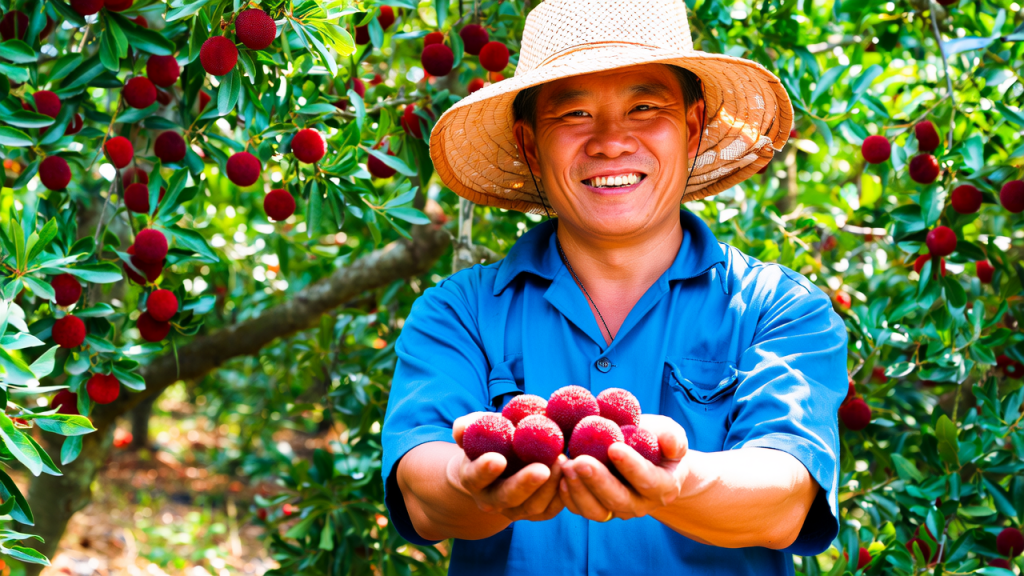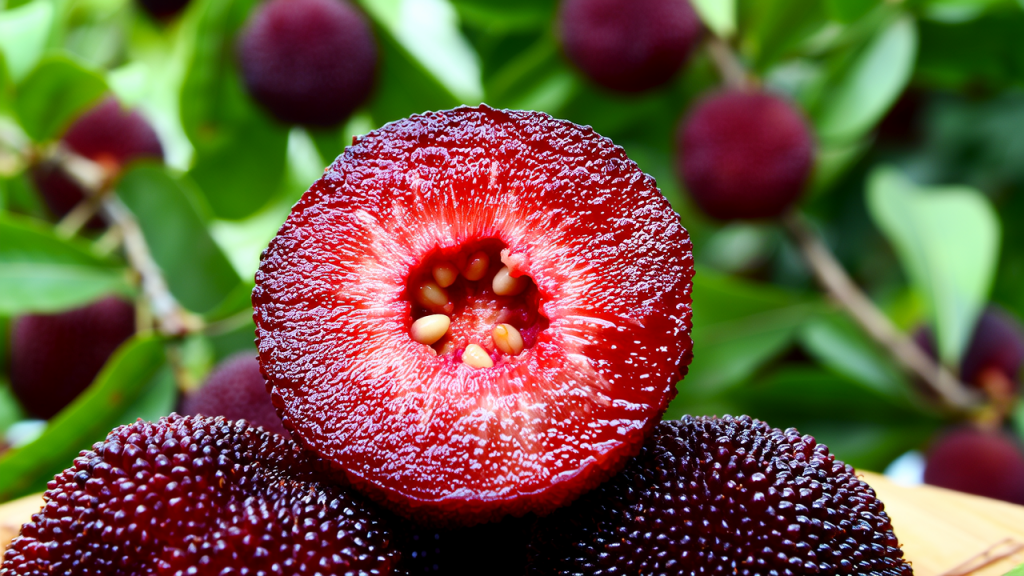Bayberry Planting/Fertilization Techniques
Comprehensive Protocol for Yield and Quality Enhancement
(Integrating Research Findings with Field Application Data)
This protocol synthesizes global research and field trials to deliver a full-cycle management strategy for Chinese bayberry (Myrica rubra). By optimizing NPK ratios, supplementing secondary nutrients, and incorporating microbial inoculants, growers can achieve 20%-35% higher yields and improved fruit quality (sugar content +1.5-2.5%, fruit diameter +2-3mm). Our approach combines proprietary fertilizers—including bio-organic granules, amino acid-based liquid fertilizers, and microbial agents—with traditional amendments to ensure ecological safety and economic returns.
NO.1 Nutrient Requirements and Fertilization Principles
1. Key Nutritional Demands
NPK Balance: Optimal N:P₂O₅:K₂O = 1:0.3:4 to 1:0.5:5, with potassium dominating (50%-60%) during fruit maturation.
Critical Micronutrients:
Calcium: Prevents fruit cracking
Magnesium: Enhances photosynthesis
Boron: Boosts pollen viability (deficiency causes 30% flower drop)
Zinc: Alleviates stunted growth
Microbial Support: Nematode-suppressing microbial agents reduce soil-borne diseases by 40%-50%.
2. Core Fertilization Guidelines
Potassium-Focused Strategy: Leverage native root nodule nitrogen fixation; excess nitrogen induces vegetative overgrowth, while surplus phosphorus deforms fruits.
Base-Dressing Synergy: 70%-80% annual nutrients applied as basal dose, primarily through Trelfey’s NY884 Bio-Organic Fertilizer.
Microbial Integration: Combine Microbial Inoculants with organic matter to boost nutrient efficiency by 15%-20%.
NO.2 Full Growth Cycle Management with Proprietary Fertilizers
1. Basal Application (September-October)
Objective: Stimulate root development and winter nutrient storage.
Technical Implementation:
Apply 75-105 tons/ha Trelfey NY884 Bio-Organic Fertilizer to improve soil structure and elevate organic matter >2.8%.
Supplement with 300 kg/ha 18-18-18 Water-Soluble NPK + 450 kg/ha potassium sulfate in 30-40cm deep ring trenches.
Recommended Additive: 30 L/ha Nematode-Suppressing Microbial Agent (diluted 500× for soil incorporation).
2. Bud Burst Stage (March-April)
Objective: Promote spring shoot growth and flower differentiation.
Proprietary Solutions:
Foliar Spray: Fish Protein Amino Acid Liquid Fertilizer (1,000× dilution) for amino acid delivery.
Drip Irrigation: 150 kg/ha 30-10-10 High-Nitrogen Water-Soluble NPK to boost shoot emergence by 25%.
Critical Note: Apply 0.2% borax solution to reduce flower drop.
3. Fruit Swelling Phase (April-May)
Objective: Enhance fruit expansion and summer shoot development.
Trelfey Fertilizer System:
Primary Nutrition: 225 kg/ha 10-5-45 High-Potassium Water-Soluble NPK via drip irrigation (increases sugar content 1.8-2.5%).
Calcium-Magnesium Support: Cal-Mag Liquid Fertilizer (800× foliar spray) reduces fruit cracking 30%.
Microbial Boost: 15 L/ha Root-Promoting Microbial Agent (with Bacillus laterosporus) to enhance potassium uptake.
4. Post-Harvest Recovery (July)
Objective: Restore tree vigor and initiate flower buds.
Integrated Approach:
Apply 30 tons/ha composted manure + 150 kg/ha 21-21-21 Balanced Water-Soluble NPK.
Anti-Stress Treatment: Humic Acid-Potassium Solution (500× foliar spray) extends leaf functionality 10-15 days.
NO.3 Technological Innovations and Impact Analysis
1. Canopy Microclimate Control
Rain-shelter umbrellas (58% light transmission) increase fruit size (+2.4mm), sugar content (+2.1%), harvest window (+8-10 days), and market price (+20%) versus open-field cultivation.
2. Precision Fertigation
Our 30-10-10 (shoot growth) and 10-5-45 (fruit swelling) Water-Soluble NPK series elevate nitrogen use efficiency to 45% when paired with drip irrigation.
3. Microbial-Organic Synergy
Trelfey 884 Bio-Organic Fertilizer combined with nematode-control microbial agents reduces pesticide use 35% while increasing yields 20-25%.
NO.4 Concluding Recommendations
This protocol leverages Trelfey’s proprietary fertilizers—including specialized Water-Soluble NPK Blends, Amino Acid Liquid Fertilizers, and Microbial Inoculants—alongside canopy management to maximize bayberry productivity. For continuous improvement:
Conduct annual soil testing to adjust fertilization
Introduce phosphate-solubilizing bacteria (e.g., Bacillus megaterium)
Optimize Hydroponic Fertilizers for controlled-environment cultivatio

The bayberry garden after fertilization is lush with branches and leaves, and the amount of fruit hanging from a single plant has increased by 35%, and the harvest is strong!

The fruit is evenly and plump, with a diameter of more than 3cm, a sugar content of up to 12%, and a 40% increase in commodity rate!

The flesh is thick and juicy, the edible rate is 92%, the anthocyanin content is increased by 20%, and the nutrition is richer!
